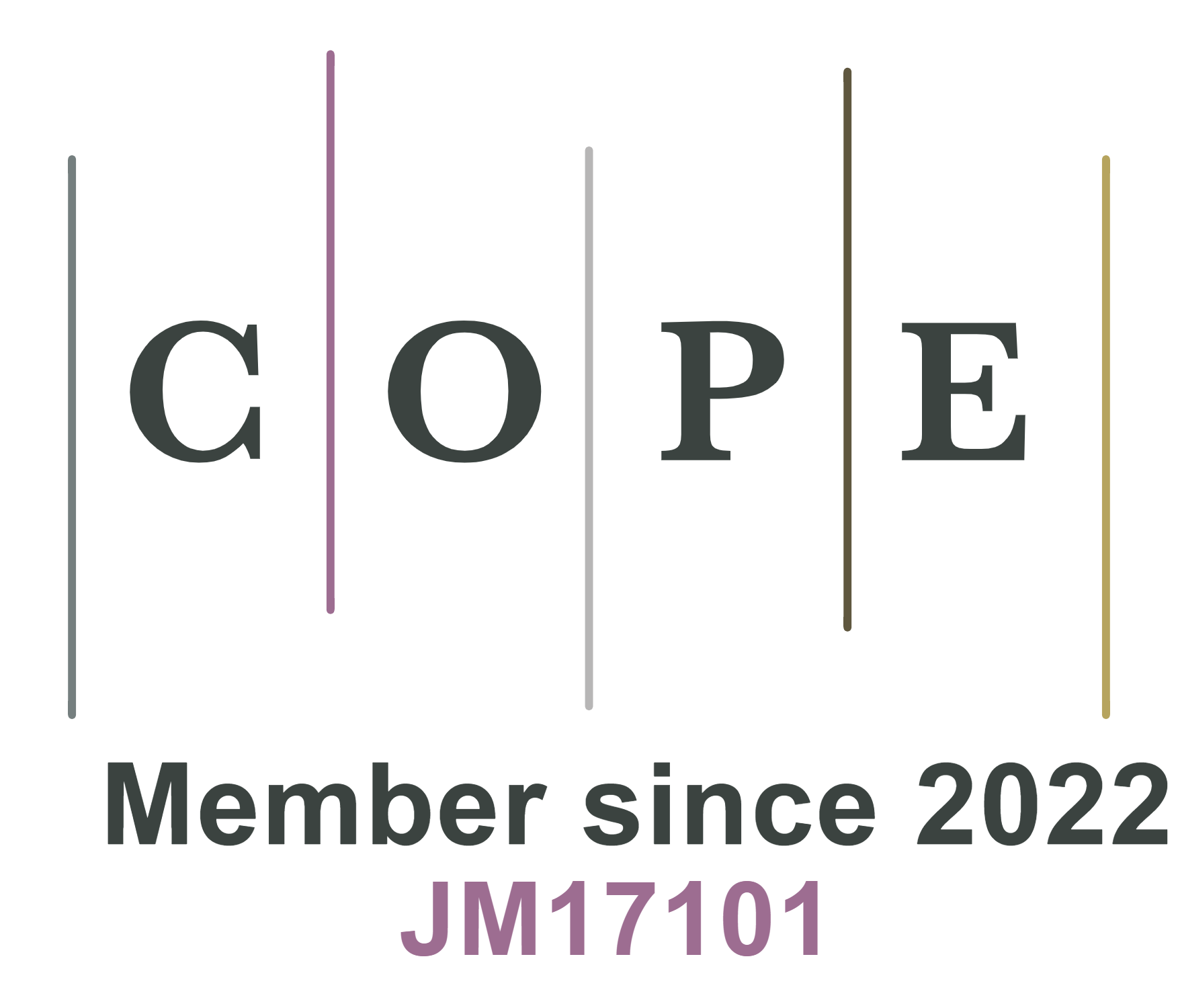REFERENCES
1. Armand M, Axmann P, Bresser D, et al. Lithium-ion batteries - current state of the art and anticipated developments. J Power Sources 2020;479:228708.
2. Miao Y, Hynan P, von Jouanne A, Yokochi A. Current Li-ion battery technologies in electric vehicles and opportunities for advancements. Energies 2019;12:1074.
3. Rangarajan SS, Sunddararaj SP, Sudhakar A, et al. Lithium-ion batteries - the crux of electric vehicles with opportunities and challenges. Clean Technol 2022;4:908-30.
4. Gandoman FH, Jaguemont J, Goutam S, et al. Concept of reliability and safety assessment of lithium-ion batteries in electric vehicles: Basics, progress, and challenges. Appl Energy 2019;251:113343.
5. Fang C, Wang X, Meng YS. Key issues hindering a practical lithium-metal anode. Trends Chem 2019;1:152-8.
6. Feng X, Ouyang M, Liu X, Lu L, Xia Y, He X. Thermal runaway mechanism of lithium ion battery for electric vehicles: a review. Energy Stor Mater 2018;10:246-67.
7. Feng X, Ren D, He X, Ouyang M. Mitigating thermal runaway of lithium-ion batteries. Joule 2020;4:743-70.
8. Su X, Wu Q, Li J, et al. Silicon-based nanomaterials for lithium-ion batteries: a review. Adv Energy Mater 2014;4:1300882.
9. Teki R, Datta MK, Krishnan R, et al. Nanostructured silicon anodes for lithium ion rechargeable batteries. Small 2009;5:2236-42.
10. Schwan J, Nava G, Mangolini L. Critical barriers to the large scale commercialization of silicon-containing batteries. Nanoscale Adv 2020;2:4368-89.
11. Chan CK, Peng H, Liu G, et al. High-performance lithium battery anodes using silicon nanowires. Nat Nanotechnol 2008;3:31-5.
12. Adenusi H, Chass GA, Passerini S, Tian KV, Chen G. Lithium batteries and the solid electrolyte interphase (SEI) - progress and outlook. Adv Energy Mater 2023;13:2203307.
13. Liu Q, Meng T, Yu L, et al. Interface engineering to boost thermal safety of microsized silicon anodes in lithium-ion batteries. Small Methods 2022;6:e2200380.
14. Peled E. The electrochemical behavior of alkali and alkaline earth metals in nonaqueous battery systems - the solid electrolyte interphase model. J Electrochem Soc 1979;126:2047-51.
16. Shin J, Kim T, Lee Y, Cho E. Key functional groups defining the formation of Si anode solid-electrolyte interphase towards high energy density Li-ion batteries. Energy Stor Mater 2020;25:764-81.
17. Xu C, Lindgren F, Philippe B, et al. Improved performance of the silicon anode for Li-ion batteries: understanding the surface modification mechanism of fluoroethylene carbonate as an effective electrolyte additive. Chem Mater 2015;27:2591-9.
18. Kennedy T, Brandon M, Laffir F, Ryan KM. Understanding the influence of electrolyte additives on the electrochemical performance and morphology evolution of silicon nanowire based lithium-ion battery anodes. J Power Sources 2017;359:601-10.
19. Kalhoff J, Eshetu GG, Bresser D, Passerini S. Safer electrolytes for lithium-ion batteries: state of the art and perspectives. ChemSusChem 2015;8:2154-75.
20. Krishna DNG, Philip J. Review on surface-characterization applications of X-ray photoelectron spectroscopy (XPS): recent developments and challenges. Appl Surf Sci Adv 2022;12:100332.
21. Tan S, Ji YJ, Zhang ZR, Yang Y. Recent progress in research on high-voltage electrolytes for lithium-ion batteries. Chemphyschem 2014;15:1956-69.
22. Xu Z, Yang J, Li H, Nuli Y, Wang J. Electrolytes for advanced lithium ion batteries using silicon-based anodes. J Mater Chem A 2019;7:9432-46.
23. Stokes K, Kennedy T, Kim GT, et al. Influence of carbonate-based additives on the electrochemical performance of Si NW anodes cycled in an ionic liquid electrolyte. Nano Lett 2020;20:7011-9.
24. Whiteley JM, Kim JW, Piper DM, Lee S. High-capacity and highly reversible silicon-tin hybrid anode for solid-state lithium-ion batteries. J Electrochem Soc 2016;163:A251-4.
25. Falco M, Lingua G, Destro M, et al. An electrochemical compatibility investigation of RTIL-based electrolytes with Si-based anodes for advanced Li-ion batteries. Mater Today Sustain 2023;21:100299.
26. Bellusci M, Simonetti E, De Francesco M, Appetecchi GB. Ionic liquid electrolytes for safer and more reliable sodium battery systems. Appl Sci 2020;10:6323.
27. Montanino M, Alessandrini F, Passerini S, Appetecchi GB. Water-based synthesis of hydrophobic ionic liquids for high-energy electrochemical devices. Electrochim Acta 2013;96:124-33.
28. De Francesco M, Simonetti E, Gorgi G, Appetecchi GB. About the purification route of ionic liquid precursors. Challenges 2017;8:11.
29. Geaney H, Dickinson C, O’dwyer C, Mullane E, Singh A, Ryan KM. Growth of crystalline copper silicide nanowires in high yield within a high boiling point solvent system. Chem Mater 2012;24:4319-25.
30. Stokes K, Geaney H, Sheehan M, Borsa D, Ryan KM. Copper silicide nanowires as hosts for amorphous Si deposition as a route to produce high capacity lithium-ion battery anodes. Nano Lett 2019;19:8829-35.
31. Mullane E, Kennedy T, Geaney H, Dickinson C, Ryan KM. Synthesis of tin catalyzed silicon and germanium nanowires in a solvent-vapor system and optimization of the seed/nanowire interface for dual lithium cycling. Chem Mater 2013;25:1816-22.
32. Brutti S, Simonetti E, De Francesco M, et al. Ionic liquid electrolytes for high-voltage, lithium-ion batteries. J Power Sources 2020;479:228791.
33. Kim GT, Kennedy T, Brandon M, et al. Behavior of germanium and silicon nanowire anodes with ionic liquid electrolytes. ACS Nano 2017;11:5933-43.
34. Zhang W. Lithium insertion/extraction mechanism in alloy anodes for lithium-ion batteries. J Power Sources 2011;196:877-85.
35. Ševčík A. Oscillographic polarography with periodical triangular voltage. Collect Czech Chem Commun 1948;13:349-77.
36. Randles JEB. A cathode ray polarograph. Part II. - The current-voltage curves. Trans Faraday Soc 1948;44:327-38.
37. Ai Q, Li D, Guo J, et al. Artificial solid electrolyte interphase coating to reduce lithium trapping in silicon anode for high performance lithium-ion batteries. Adv Mater Inter 2019;6:1901187.
38. de Rooij DMR. Electrochemical methods: fundamentals and applications. Anti-Corros Methods Mater 2003:50.
39. Tsierkezos NG. Cyclic voltammetric studies of ferrocene in nonaqueous solvents in the temperature range from 248.15 to 298.15 K. J Solution Chem 2007;36:289-302.
40. Kant R. Theory for staircase voltammetry and linear scan voltammetry on fractal electrodes: emergence of anomalous randles-sevik behavior. Electrochim Acta 2013;111:223-33.
41. Churikov A, Ivanishchev A, Ivanishcheva I, Sycheva V, Khasanova N, Antipov E. Determination of lithium diffusion coefficient in LiFePO4 electrode by galvanostatic and potentiostatic intermittent titration techniques. Electrochim Acta 2010;55:2939-50.
42. Churikov AV, Ivanishchev AV, Ushakov AV, Romanova VO. Diffusion aspects of lithium intercalation as applied to the development of electrode materials for lithium-ion batteries. J Solid State Electrochem 2014;18:1425-41.
43. Zeng W, Wang L, Peng X, et al. Enhanced ion conductivity in conducting polymer binder for high-performance silicon anodes in advanced lithium-ion batteries. Adv Energy Mater 2018;8:1702314.
44. Sivonxay E, Aykol M, Persson KA. The lithiation process and Li diffusion in amorphous SiO2 and Si from first-principles. Electrochim Acta 2020;331:135344.
45. Wang G, Xu B, Shi J, Wu M, Su H, Ouyang C. New insights into Li diffusion in Li-Si alloys for Si anode materials: role of Si microstructures. Nanoscale 2019;11:14042-9.
46. Nakajima T, Groult H. Advanced fluoride-based materials for energy conversion. 2015. Available from: https://www.sciencedirect.com/book/9780128006795/advanced-fluoride-based-materials-for-energy-conversion#book-info [Last accessed on 8 Mar 2024].
47. Macdonald JR, Johnson WB. Fundamentals of impedance spectroscopy. In: Barsoukov E, Macdonald JR, editors. Impedance spectroscopy. Hoboken, NJ: John Wiley & Sons, Inc.; 2018. pp. 1-20.
48. Middlemiss LA, Rennie AJ, Sayers R, West AR. Characterisation of batteries by electrochemical impedance spectroscopy. Energy Rep 2020;6:232-41.
49. Barsoukov E, Macdonald JR. Impedance spectroscopy: theory, experiment, and applications. Hoboken, NJ: John Wiley & Sons, Inc.; 2005.
50. Xu W, Flake JC. Composite silicon nanowire anodes for secondary lithium-ion cells. J Electrochem Soc 2010;157:A41.
51. Li J, Dahn JR. An in situ X-ray diffraction study of the reaction of Li with crystalline Si. J Electrochem Soc 2007;154:A156.
52. Appetecchi G, Shin J, Alessandrini F, Passerini S. 0.6Ah Li/V2O5 battery prototypes based on solvent-free PEO-LiN(SO2CF2CF3)2 polymer electrolytes. J Power Sources 2005;143:236-42.
53. Appetecchi GB, Passerini S. Poly(ethylene oxide)-LiN(SO2CF2CF3)2 polymer electrolytes: II. Characterization of the interface with lithium. J Electrochem Soc 2002;149:A891.
54. Hou T, Yang G, Rajput NN, et al. The influence of FEC on the solvation structure and reduction reaction of LiPF6/EC electrolytes and its implication for solid electrolyte interphase formation. Nano Energy 2019;64:103881.
55. Philippe B, Dedryvère R, Gorgoi M, Rensmo H, Gonbeau D, Edström K. Improved performances of nanosilicon electrodes using the salt LiFSI: a photoelectron spectroscopy study. J Am Chem Soc 2013;135:9829-42.
56. Wu Z, Deng L, Li J, et al. Solid electrolyte interphase layer formation on the Si-based electrodes with and without binder studied by XPS and ToF-SIMS analysis. Batteries 2022;8:271.
57. Nakai H, Kubota T, Kita A, Kawashima A. Investigation of the solid electrolyte interphase formed by fluoroethylene carbonate on Si electrodes. J Electrochem Soc 2011;158:A798-801.
58. Philippe B, Dedryvère R, Allouche J, et al. Nanosilicon electrodes for lithium-ion batteries: interfacial mechanisms studied by hard and soft X-ray photoelectron spectroscopy. Chem Mater 2012;24:1107-15.
59. Morales-ugarte JE, Bolimowska E, Rouault H, Santos-peña J, Santini CC, Benayad A. EIS and XPS investigation on SEI layer formation during first discharge on graphite electrode with a vinylene carbonate doped imidazolium based ionic liquid electrolyte. J Phys Chem C 2018;122:18223-30.
60. Piper DM, Evans T, Leung K, et al. Stable silicon-ionic liquid interface for next-generation lithium-ion batteries. Nat Commun 2015;6:6230.
61. Forster-tonigold K, Buchner F, Bansmann J, Behm RJ, Groß A. A combined XPS and computational study of the chemical reduction of BMP-TFSI by lithium. Batteries Supercaps 2022;5:e202200307.
62. Karimi N, Zarrabeitia M, Geaney H, et al. Stable cycling of Si nanowire electrodes in fluorine-free cyano-based ionic liquid electrolytes enabled by vinylene carbonate as SEI-forming additive. J Power Sources 2023;558:232621.
63. Wu J, Ihsan-ul-haq M, Chen Y, Kim J. Understanding solid electrolyte interphases: advanced characterization techniques and theoretical simulations. Nano Energy 2021;89:106489.
64. Bhattacharyya S, Hong J, Turban G. Determination of the structure of amorphous nitrogenated carbon films by combined Raman and X-ray photoemission spectroscopy. J Appl Phys 1998;83:3917-9.
65. Dementjev A, de Graaf A, van de Sanden M, Maslakov K, Naumkin A, Serov A. X-Ray photoelectron spectroscopy reference data for identification of the C3N4 phase in carbon-nitrogen films. Diam Relat Mater 2000;9:1904-7.
66. Buchner F, Forster-Tonigold K, Bozorgchenani M, Gross A, Behm RJ. Interaction of a self-assembled ionic liquid layer with graphite(0001): a combined experimental and theoretical study. J Phys Chem Lett 2016;7:226-33.
67. Blyth R, Buqa H, Netzer F, et al. XPS studies of graphite electrode materials for lithium ion batteries. Appl Surface Sci 2000;167:99-106.
68. Nguyen CC, Song S. Characterization of SEI layer formed on high performance Si-Cu anode in ionic liquid battery electrolyte. Electrochem Commun 2010;12:1593-5.
69. Bhattacharyya S, Cardinaud C, Turban G. Spectroscopic determination of the structure of amorphous nitrogenated carbon films. J Appl Phys 1998;83:4491-500.
70. Martin L, Martinez H, Ulldemolins M, Pecquenard B, Le Cras F. Evolution of the Si electrode/electrolyte interface in lithium batteries characterized by XPS and AFM techniques: the influence of vinylene carbonate additive. Solid State Ion 2012;215:36-44.
71. Vogl US, Lux SF, Das P, et al. The mechanism of SEI formation on single crystal Si(100), Si(110) and Si(111) electrodes. J Electrochem Soc 2015;162:A2281-8.
72. Dedryvère R, Gireaud L, Grugeon S, Laruelle S, Tarascon JM, Gonbeau D. Characterization of lithium alkyl carbonates by X-ray photoelectron spectroscopy: experimental and theoretical study. J Phys Chem B 2005;109:15868-75.
73. Etacheri V, Geiger U, Gofer Y, et al. Exceptional electrochemical performance of Si-nanowires in 1,3-dioxolane solutions: a surface chemical investigation. Langmuir 2012;28:6175-84.
74. Dedryvère R, Leroy S, Martinez H, Blanchard F, Lemordant D, Gonbeau D. XPS valence characterization of lithium salts as a tool to study electrode/electrolyte interfaces of Li-ion batteries. J Phys Chem B 2006;110:12986-92.
75. Kim H, Grugeon S, Gachot G, Armand M, Sannier L, Laruelle S. Ethylene bis-carbonates as telltales of SEI and electrolyte health, role of carbonate type and new additives. Electrochim Acta 2014;136:157-65.
76. Sharova V, Moretti A, Diemant T, Varzi A, Behm R, Passerini S. Comparative study of imide-based Li salts as electrolyte additives for Li-ion batteries. J Power Sources 2018;375:43-52.
77. Eshetu GG, Diemant T, Grugeon S, et al. In-Depth interfacial chemistry and reactivity focused investigation of lithium-imide- and lithium-imidazole-based electrolytes. ACS Appl Mater Interfaces 2016;8:16087-100.
78. Leung K, Rempe SB, Foster ME, et al. Modeling electrochemical decomposition of fluoroethylene carbonate on silicon anode surfaces in lithium ion batteries. J Electrochem Soc 2014;161:A213-21.
79. Ensling D, Stjerndahl M, Nytén A, Gustafsson T, Thomas JO. A comparative XPS surface study of Li2FeSiO4/C cycled with LiTFSI- and LiPF6-based electrolytes. J Mater Chem 2009;19:82-8.
80. Nie M, Lucht BL. Role of lithium salt on solid electrolyte interface (SEI) formation and structure in lithium ion batteries. J Electrochem Soc 2014;161:A1001-6.
81. Choi N, Yew KH, Lee KY, Sung M, Kim H, Kim S. Effect of fluoroethylene carbonate additive on interfacial properties of silicon thin-film electrode. J Power Sources 2006;161:1254-9.
82. Li Q, Liu X, Han X, et al. Identification of the solid electrolyte interface on the Si/C composite anode with FEC as the additive. ACS Appl Mater Interfaces 2019;11:14066-75.









